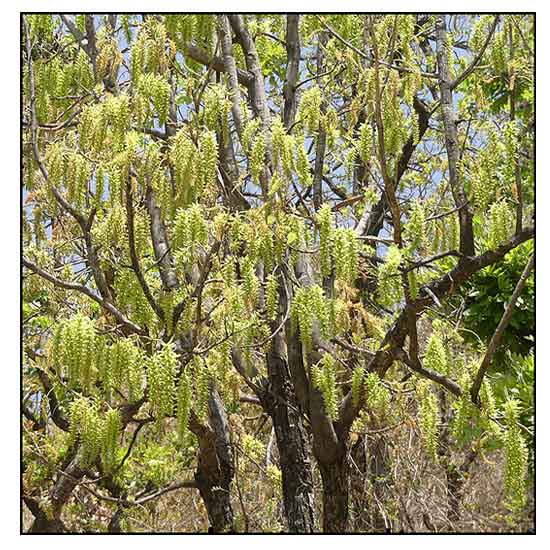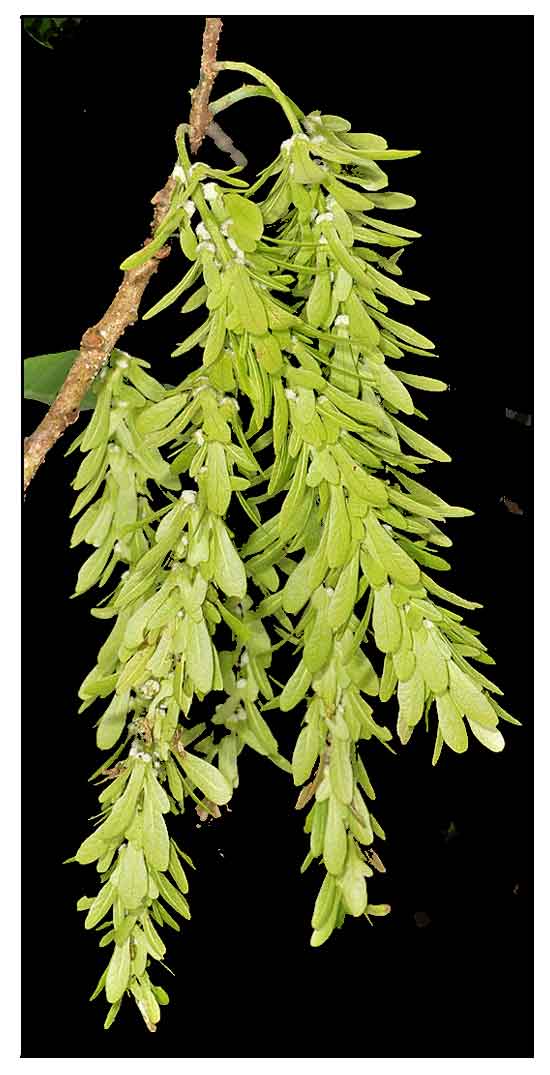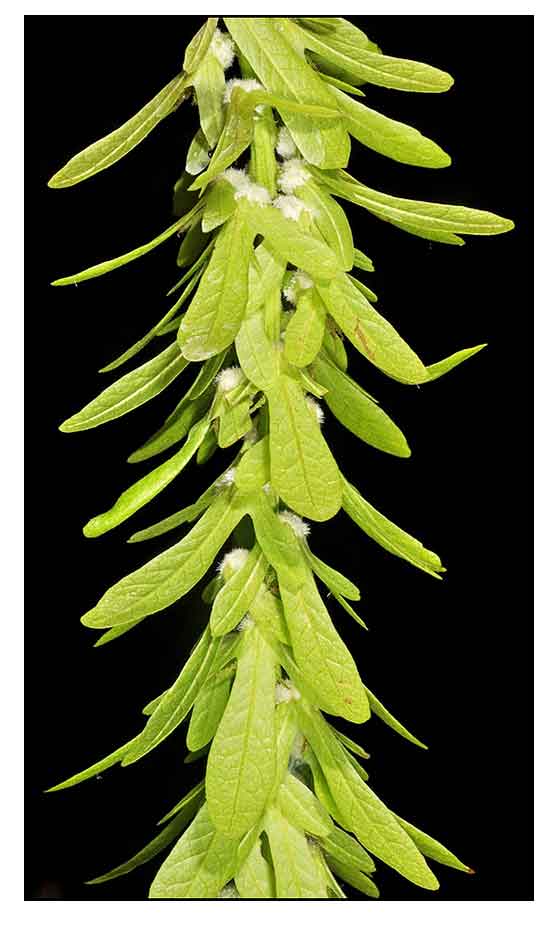
Family • Juglandaceae
Lupisan
Engelhardia spicata Lechen ex Blume
GREAT MALAY BEAN
| Scientific names | Common names |
| Engelhardia pterococca var. spicata (Lechen ex Blume) Kuntze | Lupisan (Tagalog) |
| Engelhardia spicata Lechen ex Blume | Great Malay bean (Engl.) |
| Engelhardia spicata var. genuina Koord. & Valeton | |
| Accepted infraspecifics (2) | |
| Engelhardia spicata var. integra (Kurz) W.E.Mann. ex Steenis | |
| Engelhardia colebrookeana Lindl. | |
| Engelhardia esquirolii H.Lév. | |
| Engelhardia pterococca var. colebrookeana (Lindl.) Kuntze | |
| Engelhardia spicata var. colebrookeana (Lindl.) Koord. & Valeton | |
| Engelhardia villosa var. integra Kurz. | |
| Juglans villosa Wall. | |
| Engelhardia spicata var. spicata | |
| Gyrocarpus pendulus Blanco | |
| Engelhardia aceriflora (Reinw.) Blume | |
| Engelhardia philippinensis C.DC. | |
| Engelhardia pterococca var. aceriflora (Reinw.) Kuntze | |
| Engelhardia spicata var. aceriflora (Reinw.) Koord.& Valeton | |
| Juglans pterococca Buch.-Ham. ex Wall. | |
| Pterilema aceriflorum Reinw. | |
| Engelhardia spicata Lechen ex Blume is an accepted species. KEW: Plants of the World Online | |
| Other vernacular names |
| ASSAMESE: Lal amiri, Lewa, Rumgach. |
| CHINESE: Yu nan huang qi (Mandarin). |
| HINDI: Gadh mauha, Mahwa, Samma, Silapoma. |
| KHASI: Dieng lamba, Dieng lyba. |
| LEPCAH: Savyak, Sugreot-kung. |
| MANIPURI: Heijuga-manbi, Linphop, Lilbob. |
| MIZO: Hnum. |
| NEPALI: Mauwa, Mahawa. |
| TRADE NAME: Kayu hujan. |
| OTHERS: Bokto, Oksipou, Salutsut, Salotsot, Pingol, Payong-yong, Bor-patta-jam, Bolas, Bibit. |
March 2024
![]()
 |
| PHOTOS / ILLUSTRATIONS |
| IMAGE SOURCE: Engelhardia spicata in Ramnagar Forest, Uttarakhand, India / A J T Johnsingh / CC BY-SA 3.0 / Click on image or link to go to source page book / Wikipedia |
| OTHER IMAGE SOURCE: Juglandaceae : Engelhardia spicata / Infructescence / Copyright © 2015 by P B Pelser & J F Barcelona (contact: [email protected]) [ref. DOL97048] / Non-Commercial Use / Image modified / Click on image or link to go to source page / Phytoimages.siu.edu |
| OTHER IMAGE SOURCE: Juglandaceae : Engelhardia spicata / Leaves and flowers / Copyright © 2015 by P B Pelser & J F Barcelona (contact: [email protected]) [ref. DOL96966] / Non-Commercial Use / Click on image or link to go to source page / Phytoimages.siu.edu |
Additional
Sources and Suggested Readings |
• |
DOI: It is not uncommon for links on studies/sources to change. Copying and pasting the information on the search window or using the DOI (if available) will often redirect to the new link page. (Citing and Using a (DOI) Digital Object Identifier) |
| List of Understudied Philippine Medicinal Plants |
| New plant names needed The compilation now numbers over 1,300 medicinal plants. While I believe there are hundreds more that can be added to the collection, they are becoming more difficult to find. If you have a plant to suggest for inclusion, native or introduced, please email the info: scientific name (most helpful), local plant name (if known), any known folkloric medicinal use, and, if possible, a photo. Your help will be greatly appreciated. |
• |
 |

 Gen info
Gen info

